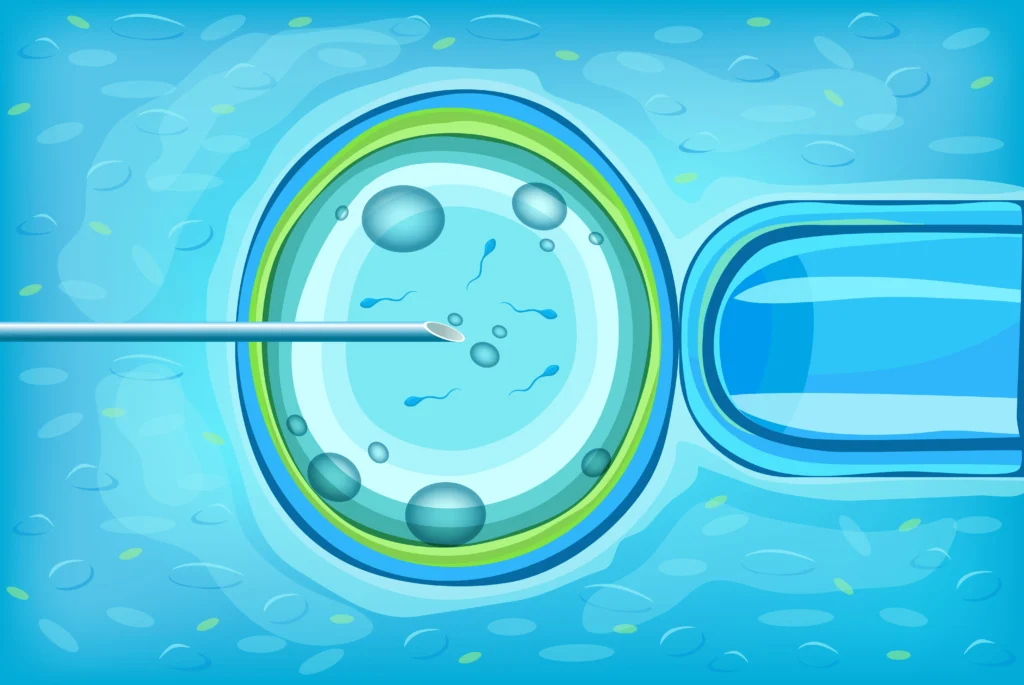Test Tube Baby
Introduction
Test Tube Baby
Test Tube baby is another name for IVF. It is the treatment that is needed to get pregnant under certain situation. The process is mainly to extract eggs and sperm and complete the fertilization process in a clinic under a protected environment. Then the embryo again in injected into the uterus.
If you are wondering what is test tube baby and IVF, whether both the terms are related, let us try to understand them in detail. Test tube baby is a term that refers to a child that is conceived outside the women’s body by a scientific process known as In-Vitro fertilization or IVF treatment. This entire process is done in a laboratory. In this process the eggs are taken from the mother’s ovary and fertilised by the sperms from the father.
The fertilised egg is cultured for 2–6 days and allowed to divided 2-4 times inside a test tube (hence the name test tube baby) These eggs are then returned back to the mother’s uterus where it can be developed normally, this is done with the intention to establish a successful pregnancy.
Test tube baby procedure has greatly helped women having infertility problems that are untreatable to give birth to healthy babies.
Why IVF is needed?
- When a badly damaged tube has no chance of recovery through surgery.
- When a man’s sperm count is low but capable o fertilization.
- For the woman who has issues with cervix perhaps ‘hostile’ mucus.
- For the woman who has issues with spontaneous ovulation, but can produce eggs with the help of fertility drugs.
Procedure :
Techniques may differ depending on the clinic, but IVF usually involves the following steps:
1. Suppressing the natural menstrual cycle
The woman receives a drug, usually in the form of a daily injection for about 2 weeks, to suppress their natural menstrual cycle.
2. Superovulation
Fertility drugs containing the fertility hormone follicle stimulating hormone (FSH) are given to the woman. FSH makes the ovaries produce more eggs than usual. Vaginal can monitor the process in the ovaries.
3. Retrieving the eggs
The eggs are collected through a minor surgical procedure known as “follicular aspiration.” A very thin needle is inserted through the vagina and into an ovary. The needle is which is connected to a suction device. This sucks the eggs out. This process is repeated for each ovary.
In 2011, researchers suggested that collecting from the ovaries in one cycle gives the highest chance of a successful pregnancy.
Frozen or donated eggs may also be used.
4. Insemination and fertilization
The eggs that have been collected are placed together with male sperm and kept in an environmentally controlled chamber. After a few hours, the sperm should enter the egg.
Sometimes the sperm is directly injected into the egg. This is known as an intracytoplasmic sperm injection (ICSI).
Frozen sperm, retrieved through testicular biopsy, may be used. This is believed to be as effective as fresh sperm in achieving a successful pregnancy. The fertilized egg divides and becomes an embryo.
At this point, some centers offer pre-implantation genetic diagnosis (PGD) which can One or two of the best embryos are selected for transfer.
The woman is then given progesterone or human chorionic gonadotrophin (hCG) to help the lining of the womb receive the embryo.
5. Embryo transfer
Sometimes, more than one embryo is placed in the womb. It is important that the doctor and the couple wishing to have a child discuss how many embryos should be transferred. Normally, a doctor will only transfer more than one embryo if no ideal embryos are available.
The transfer of the embryo is done using a thin tube, or catheter. It enters the womb through the vagina. When the embryo sticks to the lining of the womb, healthy embryo growth can begin.
Fast fact about test tube baby
- In-vitro fertilization (IVF) can help achieve pregnancy when other treatments have not worked.
- The process involves fertilizing an egg outside the body, and implanting it to continue the pregnancy.
- One percent of babies born in the United States are conceived through IVF.
- There is a higher chance of a multiple birth with IVF.



